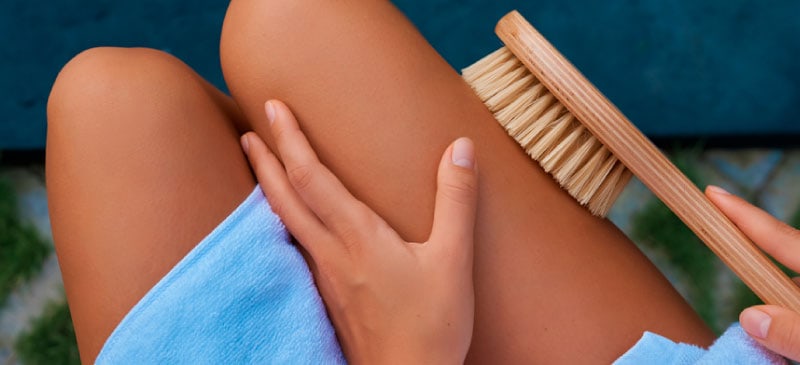This Dr. Axe content is medically reviewed or fact checked to ensure factually accurate information.
With strict editorial sourcing guidelines, we only link to academic research institutions, reputable media sites and, when research is available, medically peer-reviewed studies. Note that the numbers in parentheses (1, 2, etc.) are clickable links to these studies.
The information in our articles is NOT intended to replace a one-on-one relationship with a qualified health care professional and is not intended as medical advice.
This article is based on scientific evidence, written by experts and fact checked by our trained editorial staff. Note that the numbers in parentheses (1, 2, etc.) are clickable links to medically peer-reviewed studies.
Our team includes licensed nutritionists and dietitians, certified health education specialists, as well as certified strength and conditioning specialists, personal trainers and corrective exercise specialists. Our team aims to be not only thorough with its research, but also objective and unbiased.
The information in our articles is NOT intended to replace a one-on-one relationship with a qualified health care professional and is not intended as medical advice.
How to Get Rid of Stretch Marks
November 30, 2022

Even though stretch marks rarely cause any significant medical problems, they can be annoying, distressful and cause embarrassment because it often seems there is no way to get rid of them.
Stretch marks, also known as striae distensae, are found more often in women than men — and they typically appear in the abdomen area, the breasts, outer thighs, buttocks, thighs and upper arms.
So, how to get rid of stretch marks? While you can’t make them disappear, you can diminish their overall appearance by using certain natural remedies (discussed below).
What Are Stretch Marks?
Our skin consist of a top layer called the epidermis, the middle layer called the dermis and then the base layer. Stretch marks occur because the middle layer of the skin is torn. Essentially, stretch marks are caused by the skin being overstretched, which occurs in certain, but rather common, conditions — such as pregnancy, obesity and growing (during adolescence).
The tissue ultimately gets damaged due to stretching, and this stretching of the skin, or dermis, causes scarring. It has also been suggested that stretch marks can be caused by high serum levels of steroid hormones induced for a local or systemic steroid therapy or Cushing’s disease. High steroid hormone levels can have an effect on the decrease of collagen. Stretch marks have been reported in patients with chronic liver disease, HIV, cachectic states and anorexia nervosa.
3 Stages
Studies have shown that there are three stages of stretch marks. Stage one is the acute stage and is characterized by red and slightly raised stretch marks. Another stage is characterized by a purple or reddish mark, and, third, the chronic stage is noted by flattened areas of skin with a pink-red hue that may be itchy and slightly raised, susceptible to lengthening and acquiring a dark purple hue. Eventually, they can develop a white or silver-like appearance and become flat, shiny and depressed.
Stretch marks are separated from normal skin by a densely packed area of thin, collagen bundles. Numerous studies of mature stretch marks show that stretched collagen fibers aligned parallel to the skin surface, followed by subsequent loss of collagen and increased flattening.
Reduced amounts of fibrillin, a glycoprotein essential for the formation of elastic fibers found in connective tissue, diminished the elastin in the skin and contributes to the atrophied appearance of stretch marks. Studies have also demonstrated that the color variations of stretch marks are similar to the wound-healing process of regular scar formation.

Causes
1. Pregnancy
A study in the Journal of Family Medicine and Primary Care states that “pregnancy is a period in which more than 90 percent women have significant and complex skin changes that may have great impact on the woman’s life.” Ultimately, when the skin is stretched for long periods of time, it can cause stretch marks.
Another study showed that stretch marks can be more severe and occur more often during pregnancy at younger ages. Twenty percent (14 of 71) of teenagers had severe striae, a finding not seen as often in women over 30 years of age.
2. Weight Gain or Weight Loss
It is very common to see stretch marks when experiencing weight gain or weight loss due to the rapid development of stretched skin. This can occur through weight gain by way of obesity as well as from weight lifting. Additionally, weight loss can reveal stretch marks.
When the body increases in size too quickly, the skin can’t stretch far enough and markings may develop due to the stress placed on the skin. However, if muscles are developed at a slower pace, stretch marks are less likely to appear. Adversely, when the body experiences rapid weight loss, stretch marks can become more evident. This is because the excessive fat or increase in muscle stretched the skin for a long period of time.
3. Rapid Growth During Adolescence
A factor that can contribute to the development of stretch marks is the intense hormonal changes causing the increasing level of certain hormones called glucocorticoids, which are produced by human adrenal glands. Steroid hormones that support the body growth during puberty, glucocorticoids flow into the bloodstream, preventing the dermis from producing sufficient levels of collagen and elastin fibers which should support skin elasticity.
Stretch marks during adolescent years usually occur in healthy individuals of normal weight around puberty in association with typical growth spurts. The development of stretch marks coincide with the common adolescent bodily changes such as testicular enlargement, breast development, pubic hair growth and menstruation. The condition is more common in boys, presumably because boys grow faster than girls during puberty.
The Indian Journal of Dermatology reports that onset of stretch marks is usually between 14 and 20 years of age in males and 10 and 16 years of age in females. The case describes a 13-year-old boy with stretch marks, that developed during adolescence, found mainly in the upper back.
4. Increased Cortisone in the Body
We have established that stretch marks are most often the result of skin stretching but it is also caused by an increase of cortisone in the body. Cortisone is a hormone naturally produced by the adrenal glands, yet if there is too much of this hormone, it can make the skin lose its elasticity and cause thinning.
Corticosteroid creams, lotions, pills, and chronic use of oral or systemic steroids can increase the amount of this hormone in the body, which can induce stretch marks because they decrease the skin’s ability to stretch as well as causing drying of the skin making stretch marks more prevalent. Some conditions or diseases such as Cushing’s syndrome, Marfan syndrome, Ehlers-Danlos syndrome and other adrenal gland disorders can also cause stretch marks by increasing the amount of cortisone in your body.
How to Get Rid of Stretch Marks
In order to get rid of stretch marks, or at least improve the appearance of them or prevent them from happening in the first place, multiple therapies are under development. The Journal of Dermatologic Surgery and Oncology conducted a study of the experience of 20 patients with stretch marks of varying circumstances using a topical treatment. Of the 16 patients who completed the study, 15 had significant improvement in their clinical picture.
The treatment of stretch marks varies and includes various creams, topical oil massages and glycolic acid to name a few. While lasers are considered an effective treatment, there are many natural ways to get rid of stretch marks.
1. Vitamin K
Vitamin K is very beneficial in helping to reduce the appearance of stretch marks. You can find vitamin K is foods such as dandelion greens, mustard greens, Swiss chard, spring onions or scallions, kale, spinach and Brussels sprouts to name a few.
2. Essential Oils (Such as Rosehip, Frankincense and Helichrysum)
Essential oils are found in plants and typically cold pressed from the seeds. Rosehip oil, for example, is a lightweight, non-greasy oil full of essential fatty acids that improve skin strength and elasticity. It’s noted as the best source for trans-retinoic acid, a natural form of vitamin A that encourages skin to regenerate faster.
Because of the regenerative properties of both frankincense and helichrysum, these essential oils also make great choices for helping to minimize the appearance of stretch marks. You can try these oils, blended with olive or coconut oil, with a derma roller to maximize the effect and minimize healing time.
Here is a great DIY stretch mark cream with all of these essential oils, along with other healing properties.
3. Coconut Oil
Coconut oil is a great go-to for helping minimize stretch marks. While it’s a saturated fat, coconut oil sets itself apart from your typical saturated fats because it’s primarily made up of medium chain triglyceride lauric acid.
Coconut oil is known for having a long list of benefits, but in this case, its ability to improve skin elasticity, increase cell regeneration, and fight off infection are most important. Use coconut oil directly over stretch marks by itself or just prior to using a derma roller.
This homemade stretch mark scrub with fractionated coconut oil relies on raw sugar and shea butter, and I consider it one of the best ways to reduce the signs of stretch marks.
4. Gelatin
Because the loss of collagen often results in stretch marks, it would make sense that gelatin, one of the best dietary sources of collagen available, can help decrease the risk of stretch marks as well as minimize those that already exist.
When taken by mouth into the body, this superfood helps to firm skin and promotes growth of new cells in addition to providing joint support, hair and nail health and improving digestion. Collagen protein is a great source as well as bone broth.
5. Aloe Vera
It’s no surprise that aloe vera gel is on this list of helping reduce the scarring that stretch marks can cause. It has been known to make a positive effect on the skin for decades. Aloe vera gel is an excellent source of vitamins, and it an amazing natural moisturizer. Aloe vera is very gentle and can be used as often as you like. Make sure you select pure aloe vera gel.
6. Microneedling
Microneedling, or collagen induction therapy, is a minimally invasive skin treatment in which a dermatologist or aesthetician intentionally creates tiny punctures in the top layer of skin using micro-fine needles. It can help reduce scars and improve the appearance of stretch marks.
7. Dry Brushing
Dry brushing may help stimulate the cells and break down toxins from beneath the skin, and it may help reduce the appearance of stretch marks plus act as a natural remedy for cellulite.

